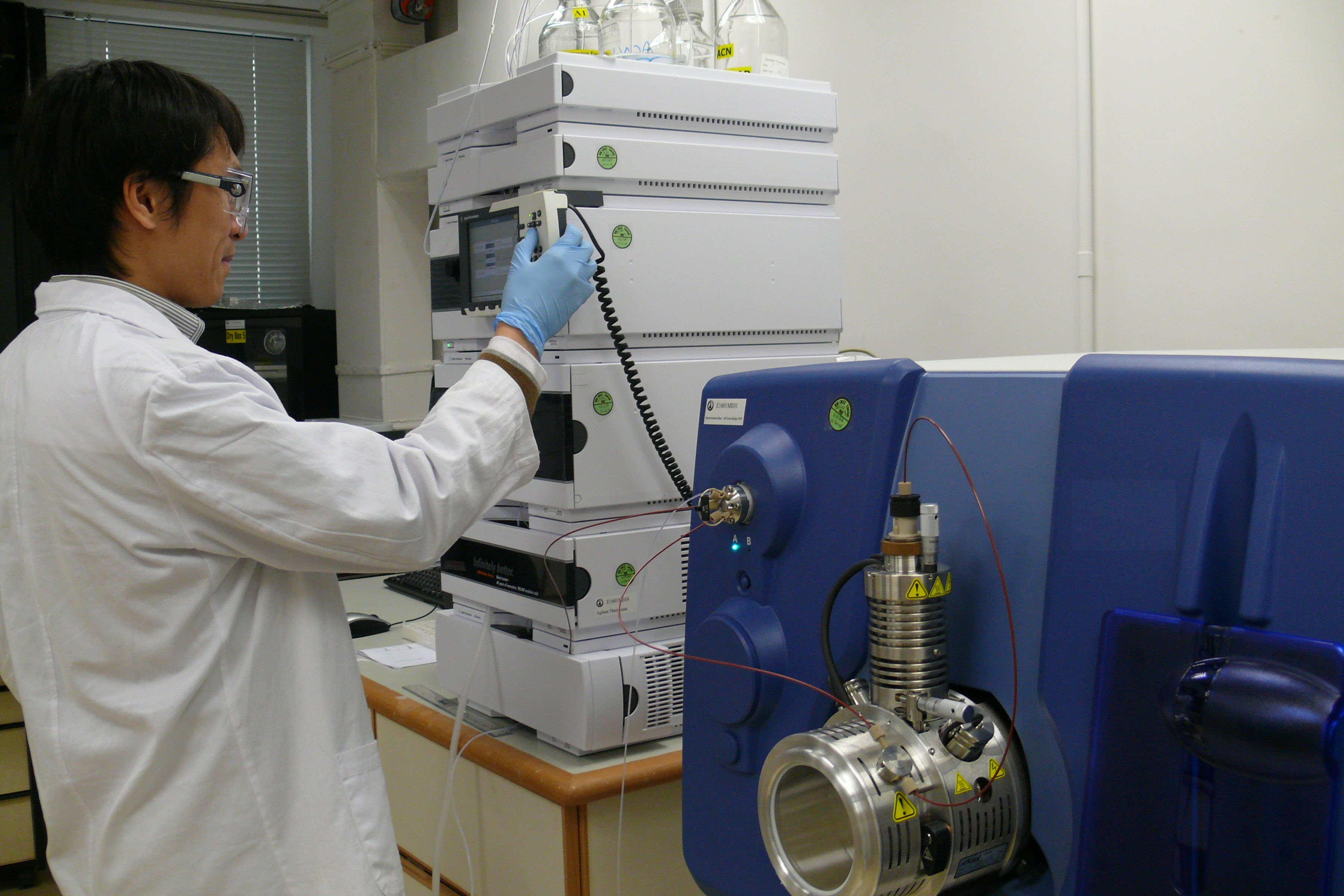Forensic Toxicology Sections
The scope of service provided by the Forensic Toxicology Sections can be divided in 4 operational areas: Analytical Toxicology, Urinalysis, Drink and Drug Driving, and Hair Drug Testing, each with its distinctive functions.
The Analytical Toxicology service examines biological materials (mostly ante- or post-mortem specimens of human origin) such as blood, urine and liver, as well as related materials found at scenes for drugs or poisons. The findings assist the Coroners, Forensic Pathologists of the Department of Health and Clinical Pathologists of the Hospital Authority in the investigation of cause and manner of death. Furthermore, the examination results can also help the Police Force in criminal investigations of cases such as homicide or sexual assault where drugs or poisons may be implicated.

LC/MS Analysis
The Urinalysis service screens opiate drugs in urine samples submitted by the methadone clinics of the Department of Health from drug addicts registered in the Methadone Maintenance Programme. It is also responsible for the analysis of opiate and non-opiate drugs of abuse in urine samples submitted by the Social Welfare Department, the Correctional Services Department, Police Force and some schools under the support of Narcotics Division for their respective drug monitoring programmes.
The Drink and Drug Driving service receives blood or urine samples taken from drivers suspected of having taken alcohol or drugs and examines them for these substances. The Drink Driving service was set up in December 1995 as a result of changes to the Road Traffic Ordinance enacted at that time to make it an offence to drive with alcohol in breath, blood or urine exceeding the corresponding statutory limits. The statutory limits have been revised since then and are now divided into 3 tiers based on proportions of alcohol in the specimens, with heavier penalty for the higher proportion. Effective from 15 March 2012, the Drink Driving service has been extended to the Drink and Drug Driving service which also covers the laboratory analysis of blood or urine taken from drivers of drug driving cases after the implementation of the legislative amendments of the Road Traffic Ordinance. In the amendments, a new 'zero-tolerance offence' is introduced such that it would be an offence if a driver has been proved to have taken any concentration of the specified illicit drugs, namely heroin, ketamine, methamphetamine (ice), cannabis, cocaine and 3,4-methylenedioxymethamphetamine (ecstasy).
The Hair Drug Testing service examines targeted drugs of abuse in hair collected from students of schools that have joined the Healthy School Programme.
The services also include providing expert advice to clients and courts on an as-needed basis on issues related to the analytical aspects of drugs and alcohol.
Key Instruments
The following instruments are used routinely by the Section:
- Ultra performance liquid chromatography/quadrupole time of flight mass spectrometry system
- High performance liquid chromatography/mass spectrometry system
- Gas chromatography/mass spectrometry system
- Headspace gas chromatography system
- Immunoassay system
Targets and Key Indicators
Key Performance Measures Relating to the Forensic Science Services
Targets
Targets are defined as the percentage of completed cases whose individual case-completion time does not exceed a specified number of working day(s).
